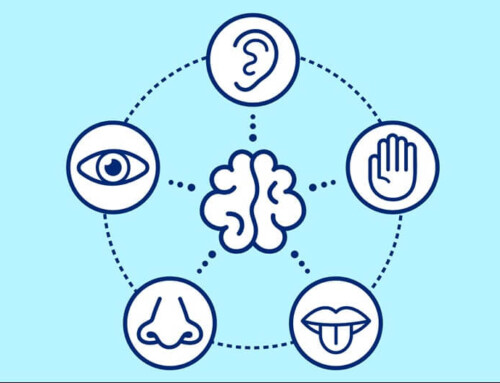This is the second post in a two part series on more productive corporate meetings. You can read part one by clicking here.
Everyone wants to make meetings shorter, more productive and more effective. There’s also a big difference between a good meeting, and a bad one. The best meetings are those where participants leave feeling that something was accomplished. Executives love productive meetings because this keeps employees motivated and more importantly, translates the vision of the organization into tangible results.
In the first half of this two part series, the following strategies were provided for more productive corporate meetings:
- Set Meeting Ground Rules
- Determine Meeting Attendees
- Schedule a Time that Works for Everyone
- Establish a Purpose
- Get Input
- Plan Ahead
- Send Out a Reminder
- Designate a Leader and Recorder
- Be Punctual
Below are nine more strategies that will lead to better results and delighted executives:
-
- Minimize Distractions
Ask participants to silence phones and refrain from texting, emailing, or working on other projects during the meeting. It is important that attendees stay for the entire duration of the meeting. For longer meetings, such as those which often occur offsite, consider if dress code, environmental illness or use of technology can create distractions. For example: t-shirts with offensive graphics, dirty or exceptionally frayed clothing, low riding pants that intentionally display undergarments, short skirts or low-cut blouses, strong perfumes/after-shave, or use of social media. Additionally, minimize whispering or sidebar discussions among attendees. Not only is this rude to other participants, but this kind of distraction means that those involved may miss critical information. - State the Meeting’s Purpose
At the commencement of the meeting, remind your participants of the big picture goals and a short overview of your organization’s mission. Explain how this particular meeting is relevant to the company’s overall vision. This will help participants better understand why the meeting is taking place, why it is so important as this will help attendees become more vested in the topics being discussed. - Encourage Participation
In order to foster open communication, an atmosphere of mutual respect is non-negotiable. Healthy problem-solving and communication can’t flourish if people feel they might be dismissed or ridiculed. Not only should this behavior be outlined in your ground rules, but the meeting leader should also be ready to facilitate conversation with differing viewpoints, step in if any one person is dominating the conversation, or stop the conversation if things become negative and counter-productive.Communication isn’t the only way to encourage participation. Adding technology in another way to spur on engagement, especially for offsite meetings. Apps and other technology can significantly boost engagement by encouraging social interaction, helping attendees to explore what’s going on around them, what’s hot (e.g. what other attendees might be talking about) and offering real-time feedback so that meeting facilitators can improve and/or modify the meeting to reflect what attendees need to improve the meeting’s effectiveness. - Brainstorm Action Plans
Any discussion of an issue must be tethered to an action plan. Consider the what, why, and how of each item. Use this meeting as a time to think through the details together so that nothing is overlooked. - Keep Everyone Accountable
As tasks are assigned to particular teams or individuals, communicate expectations and set concrete deadlines within the meeting. For example, “Bob, in order to gain the funding needed to purchase the XYZ Widget you need approval from finance by April 15th and a signature from James.” Or, “The new 123 Widgets will launch on January 2nd so sales teams will be expected to increase sales quotas by 20%. Sally, Kurt, Sue and Joe, you will need to respond to Jane by October 4th with any material you need to support your sales pipelines.” Your meeting recorder should be documenting these assignments and deadlines.If the purpose of the meeting, such as if the case with offsite meetings, is to educate, inform or network, there may be other methods of accountability. For example, apps can help boost engagement (as well as determine a meeting’s effectiveness) by asking attendees to answer questions. What have they learned? Then remeasuring a few months later to see how much has been retained.Gamification can also be a fun way to hold attendees accountable without them even being aware of what’s happening. What new names have they connected with and how these interactions been helpful (or be helpful)? Who has made the most new connections networking during the meeting free time? Who has answered the most questions correctly during training? Who has the most knowledge about the new product or service in the peer group? Who has been able to complete the most tasks on their list since the last meeting took place? - Stay on Topic
Going off topic is not always a sign of disorganization. Sometimes an important issue comes up that should be discussed. However, if it is not on the agenda, this is not the time or place for it. Quickly jot these additional items down on post-it notes, notecards, flipchart, or a whiteboard to ensure they are not forgotten. Plan a follow-up meeting to cover these other issues so that they can be given the time and attention needed. Alternately, these topics may be better addressed through email, in smaller meetings with different people and/or departments and brought back in as topics once more details are known. - Check off Meeting Tasks When Completed
Everyone loves a completed to-do list, right? Meeting tasks are the same! To track your meeting progress, cross-off agenda items as they are accomplished. This will give your participants the visual assurance that progress is being made and that the meeting is getting nearer to accomplishing the goals it set out to do. - Summarize Action Items
Before the meeting ends, be sure to allocate a few minutes of time to debrief and summarize what was covered, what still needs to be done (as well as who is assuming ownership for the task), and any follow-up action items.
Hold attendees accountable to the agreed upon plan by sending out an email follow-up within 1 to 2 days after the meeting. Your email should be addressed to all attendees and should include the meeting minutes as well as a summary of the to-do items. - Gauge Meeting Effectiveness
After the meeting is over take some time to assess the meeting’s success. Take into account what was resolved, what is still pending, and what new items require future action. Were the meeting goals achieved? If not, why?Incorporate live surveys/polling, gamification, and social interaction to learn more information about how attendees are feeling about the meeting both in real-time as well as after the meeting has been concluded.
- Minimize Distractions
Although these strategies are fairly simple to implement, they will drastically alter the tone and productivity of your meetings, whether small inter-office meetings, or larger, offsite events. Try applying a few or all of these to your next meeting. You might be surprised how quickly your meeting is transformed.
For assistance in planning your next corporate meeting, contact Gavel International for more information about our outsourced programs.
This article was last updated on July 18, 2025
- 6 Ways to Demonstrate That You Are a Contemporary Leader - July 14, 2025
- Why Hustle Culture Can Harm Sales Success – and How to Repair the Damage - June 30, 2025
- Enhance Sales Through Team-Friendly Storytelling - May 5, 2025






